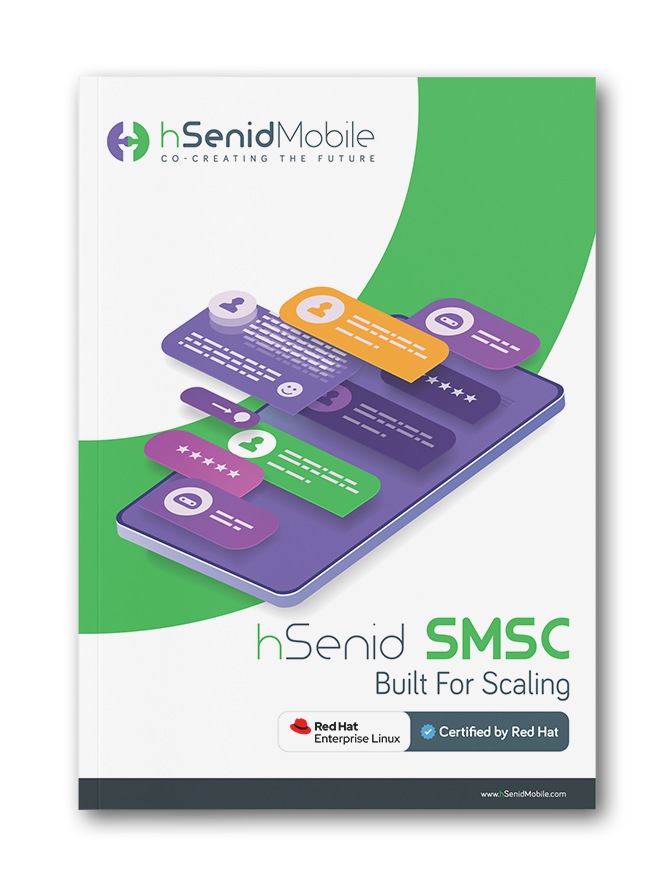Ever tried using a suitcase padlock to secure a bank vault? Technically, it
locks. But would you bet your life or your business on it? That’s the
difference between consumer-grade and enterprise-grade. One’s designed for
convenience. The other’s built for chaos, pressure, and zero-margin-for-error
environments.
Now, replace that vault with your telecom core. And that flimsy lock? That’s the SMSC most vendors are peddling. It might work until it doesn’t. And when it doesn’t, you’re not just dropping a message. You’re losing millions in throughput, credibility, and regulatory goodwill.
That’s why picking an enterprise-grade SMSC solution is a different conversation altogether. It’s not about sending messages. It’s about delivering them at scale, without fail, under fire.
Here’s the thing: not every SMSC that claims to be “enterprise-grade” actually is. Some are just glorified dev tools dressed in enterprise buzzwords. So what separates the real deal?
An enterprise-grade SMSC solution is built for high-volume, mission-critical telecom operations, the kind where downtime means angry calls from operators, lost revenue, and breached SLAs. It has to deliver blistering throughput, sub-second latency, and 99.999% uptime. Not once. Every time.
It supports multiple signaling protocols, SMPP, SS7, and Diameter, without flinching. It handles message queues like a seasoned air-traffic controller, rerouting traffic on the fly. And it does all this while staying compliant with shifting regulations, keeping networks secure, and providing telco-grade transparency through delivery reports and real-time dashboards.
This isn’t a plug-and-play messaging app. It’s core telecom infrastructure.
Let’s cut through the brochure-speak. What matters?
If you’ve ever sat in an NOC watching dashboards during peak load, you know: the details are where SMSCs earn their enterprise stripes.
Let’s be honest, it’s not always about the flashiest UI or the biggest marketing budget. Telcos are practical beasts. They care about:
Because here’s the quiet truth: plenty of vendors talk a big game. But when the signaling gets weird, or traffic spikes unexpectedly, only the real ones hold steady.
Before you commit to any SMSC solution, demand excellence, ensure it delivers on every one of these must-haves, no exceptions:
In telecom, the difference between “good” and “enterprise-grade” is measured in milliseconds, lost messages, and post-mortem calls. Choosing the right SMSC isn’t just about features; it’s about trust, resilience, and the confidence that it’ll hold up when things get messy. It’s the invisible backbone that only gets noticed when it fails, so make sure it doesn’t.
And while we’re on the topic, hSenid SMSC has been quietly powering some of the toughest messaging operations around. Built with telecom-grade performance in mind, hSenid SMSC stands as a trusted partner for operators needing true enterprise-grade power. From SS7 to SMPP and 5G-ready protocols, it’s designed to scale and deliver when it matters most. The best enterprise-grade SMSC solution ever.
Now, replace that vault with your telecom core. And that flimsy lock? That’s the SMSC most vendors are peddling. It might work until it doesn’t. And when it doesn’t, you’re not just dropping a message. You’re losing millions in throughput, credibility, and regulatory goodwill.
That’s why picking an enterprise-grade SMSC solution is a different conversation altogether. It’s not about sending messages. It’s about delivering them at scale, without fail, under fire.
What Does an ‘Enterprise-Grade SMSC Solution’ Really Mean?
Here’s the thing: not every SMSC that claims to be “enterprise-grade” actually is. Some are just glorified dev tools dressed in enterprise buzzwords. So what separates the real deal?
An enterprise-grade SMSC solution is built for high-volume, mission-critical telecom operations, the kind where downtime means angry calls from operators, lost revenue, and breached SLAs. It has to deliver blistering throughput, sub-second latency, and 99.999% uptime. Not once. Every time.
It supports multiple signaling protocols, SMPP, SS7, and Diameter, without flinching. It handles message queues like a seasoned air-traffic controller, rerouting traffic on the fly. And it does all this while staying compliant with shifting regulations, keeping networks secure, and providing telco-grade transparency through delivery reports and real-time dashboards.
This isn’t a plug-and-play messaging app. It’s core telecom infrastructure.
The Real Features That Separate Leaders from the Rest
Let’s cut through the brochure-speak. What matters?
- Intelligent routing: Not the kind that just picks a random path, but logic-driven routing that knows how to avoid congestion, geo-failures, or poor-quality links, all while optimizing cost and delivery time.
- Massive throughput: CWe’re talking millions of messages per second, especially during flash traffic events. If your SMSC chokes under a holiday spike or an election-night surge, it’s not enterprise-grade. It’s just expensive duct tape.
- Real-time DLRs: Telcos need proof. Not “maybe it got there,” but timestamped, protocol-specific delivery receipts they can audit. Anything less is guesswork. Geo-redundancy and failover.
- Geo-redundancy and failover: Imagine a fiber cut in Singapore. Does traffic reroute to Frankfurt instantly? Or do messages die quietly in the dark? An enterprise SMSC doesn’t panic; it reroutes, rebalances, and keeps delivering.
If you’ve ever sat in an NOC watching dashboards during peak load, you know: the details are where SMSCs earn their enterprise stripes.
What Telcos Actually Look for in an SMSC Vendor
Let’s be honest, it’s not always about the flashiest UI or the biggest marketing budget. Telcos are practical beasts. They care about:
- Effortless integration: The SMSC must play nicely with legacy core systems, IMS layers, and external APIs, without needing an army of consultants.
- Protocol support: SMPP is the baseline. Add SS7, Diameter, SIP, and now 5G signaling interfaces? That’s when ears perk up.
- Analytics & visibility: If you can’t see what’s happening in real-time, you can’t fix it. Detailed dashboards, smart alerting, and log-level tracing aren’t bonuses. They’re table stakes.
- SLA guarantees: 99.999% uptime isn’t just a sticker. It’s a contract. And vendors who don’t treat it like gospel get benched fast.
- Compliance & security: Whether it’s GDPR, TRAI, or GSMA frameworks, a serious SMSC comes hardened and audit-ready.
Because here’s the quiet truth: plenty of vendors talk a big game. But when the signaling gets weird, or traffic spikes unexpectedly, only the real ones hold steady.
Your Enterprise-Grade SMSC Solution Checklist
Before you commit to any SMSC solution, demand excellence, ensure it delivers on every one of these must-haves, no exceptions:
- Multi-protocol support (SMPP, SS7, Diameter)
- Real-time reporting & delivery receipts (DLRs)
- Horizontal scalability for burst traffic
- Built-in firewalls, rate-limiting, and fraud detection
- 99.999% uptime with proven HA architecture
- Geo-redundancy with automated failover
- Support for 5G and IP-based signaling
- Transparent SLA metrics and API logs
- Flexible integration with BSS/OSS stacks
Not All SMSCs Are Built the Same
In telecom, the difference between “good” and “enterprise-grade” is measured in milliseconds, lost messages, and post-mortem calls. Choosing the right SMSC isn’t just about features; it’s about trust, resilience, and the confidence that it’ll hold up when things get messy. It’s the invisible backbone that only gets noticed when it fails, so make sure it doesn’t.
And while we’re on the topic, hSenid SMSC has been quietly powering some of the toughest messaging operations around. Built with telecom-grade performance in mind, hSenid SMSC stands as a trusted partner for operators needing true enterprise-grade power. From SS7 to SMPP and 5G-ready protocols, it’s designed to scale and deliver when it matters most. The best enterprise-grade SMSC solution ever.








